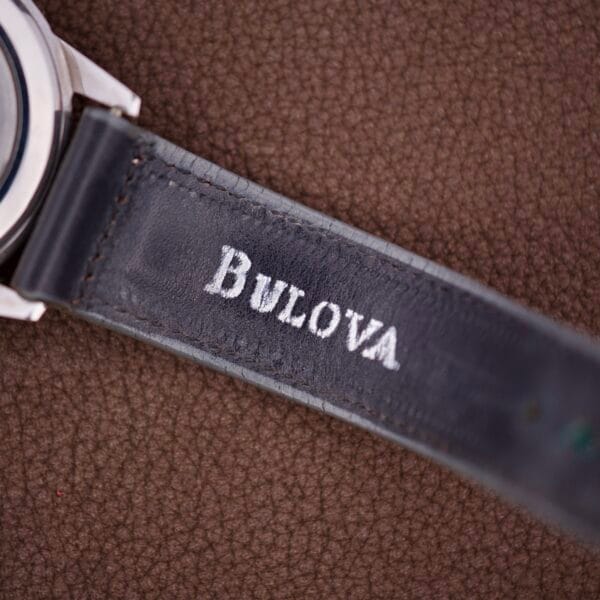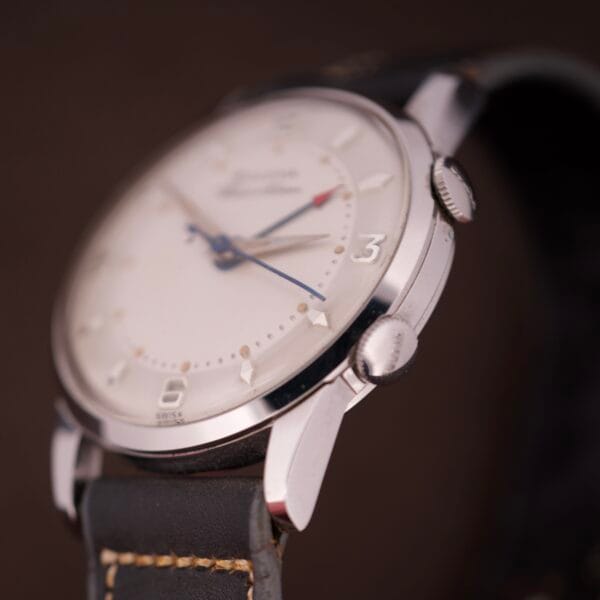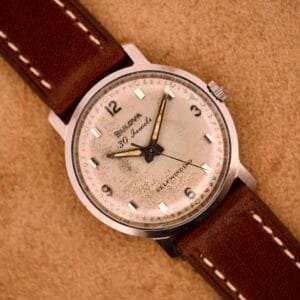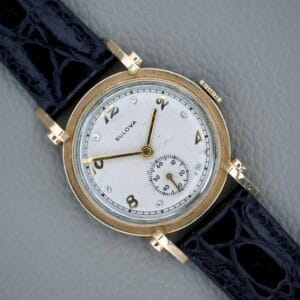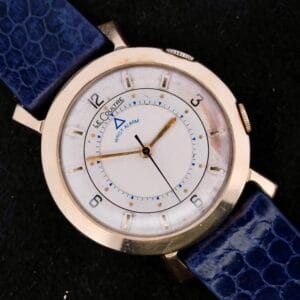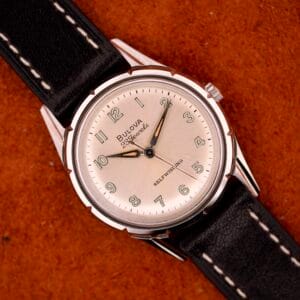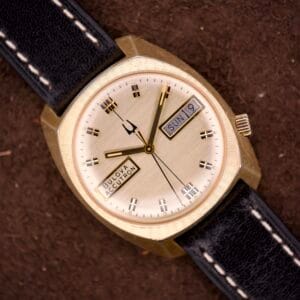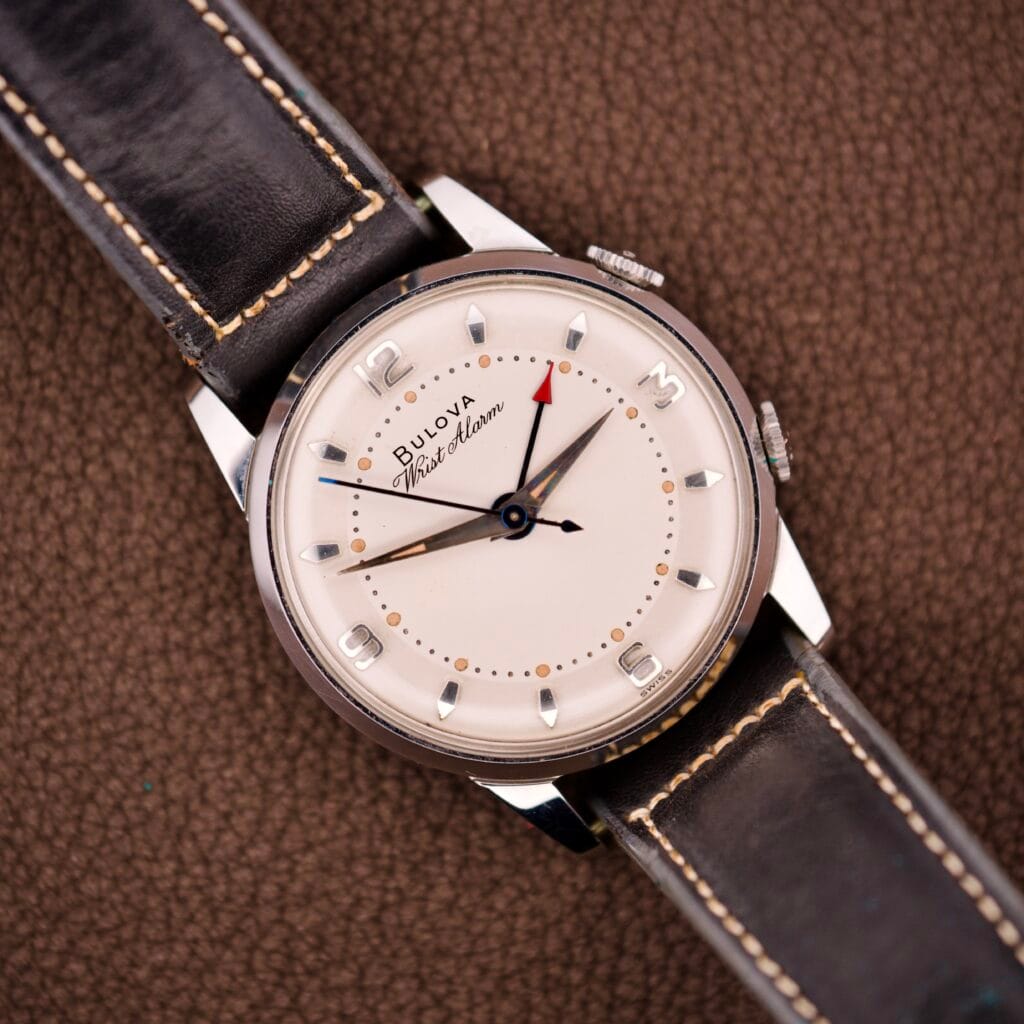Don't miss the next drop
In the mid-20th century, before the digital beep of a Casio or the haptic vibration of a smart device, the mechanical alarm watch was the ultimate executive tool. While the Vulcain Cricket and Jaeger-LeCoultre Memovox often steal the spotlight, the Bulova Wrist Alarm was a formidable contender that brought this sophisticated complication to a wider audience. It represents a golden era of practical mechanical innovation, where a watch wasn’t just jewelry, it was a personal assistant on the wrist. To find one in this condition is essentially unheard of; it is a survivor that offers the same utility and charm as its high-end Swiss counterparts but with a uniquely American-influenced design pedigree.
The 1950s were a time of rapid corporate expansion, and the “man on the move” needed to keep strict appointments. Bulova responded with the Wrist Alarm, utilizing the robust Caliber 11AERC. Unlike many competitors who utilized generic A. Schild movements, Bulova’s 11AERC was a distinctive manual-wind engine designed to be durable and audible. The mechanism uses a separate mainspring for the alarm, wound by the crown at 4 o’clock, which drives a hammer to strike a pin or the caseback, creating a buzzing vibration that is impossible to ignore. This specific era of Bulova design blends the dressy elegance of the post-war years with the emerging utility of “tool watches,” creating a versatile aesthetic that works as well in a boardroom today as it did sixty years ago.
This particular example is a collector’s dream: a “time capsule” piece that appears virtually untouched. The dial is a crisp, matte white with a subtle “bullseye” or two-tone effect, framed by applied steel Arabic numerals at the cardinal points and dagger markers in between. The handset is a classic dauphine style with original luminous inserts that have aged to a warm, sandy tone, matching the intact lume plots on the dial perfectly. The star of the show is the red-tipped alarm hand, which provides a pop of color and easy legibility against the monochrome backdrop. The dual signed “Bulova” crowns are correct and sharp—the top crown winds and sets the time, while the bottom crown winds and sets the alarm.
“New Old Stock” is a term often overused, but this watch earns it. The stainless steel case retains its original factory finishing, with razor-sharp edges on the lugs and zero signs of polishing. The caseback engraving is deep and crisp. The dial is flawless, free from the spotting or moisture damage that plagues many alarm watches (which were often not water-resistant). Perhaps most remarkably, it is mounted on its original, factory-issued black leather strap. The inner lining is clearly stamped with the silver “BULOVA” logo, and the leather is still supple, complete with its original buckle. This is not just a watch; it is a complete package as it would have left the jeweler’s display decades ago.







